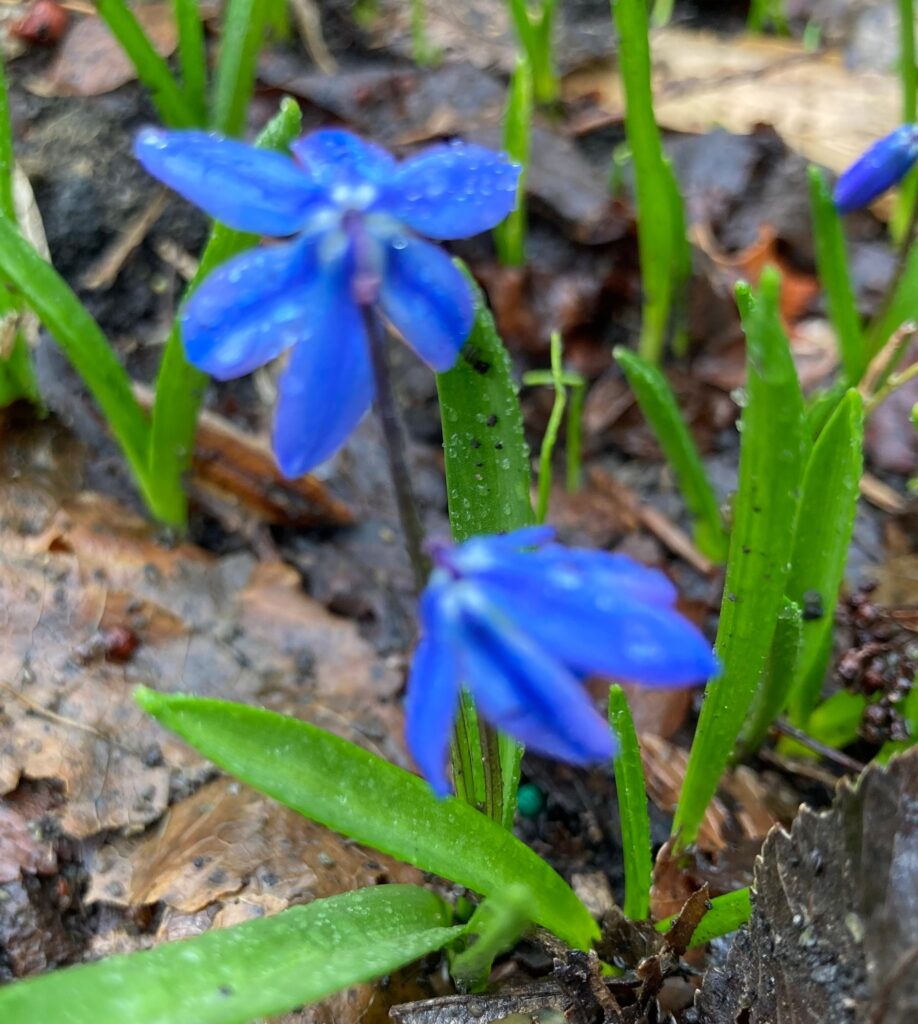Scilla makes a haze of green and blue in the garden in early spring, and looks lovely alongside white-blooming hellebores. It spreads in our region, but fairly slowly in my experience — it takes several decades to form a sizeable colony. There are a few homes in southeast Oak Park where scilla is planted all through the lawns, and those lawns are a sea of blue in early spring.
I didn’t actually plant any myself; the scilla was here when I moved into the house, and is one of the few plants to survive a year-and-a-half of construction. The small dormant bulbs have the capacity to survive major earth-moving operations, and may reestablish themselves wherever the soil is dumped.
Native gardening note: If you’re aiming towards a primarily native garden, or live near a natural area, it’s recommended that you do not plant scilla, or remove them before they take over. There’s a decline in some wildlife species dependent on native wildflowers displaced by scilla.


